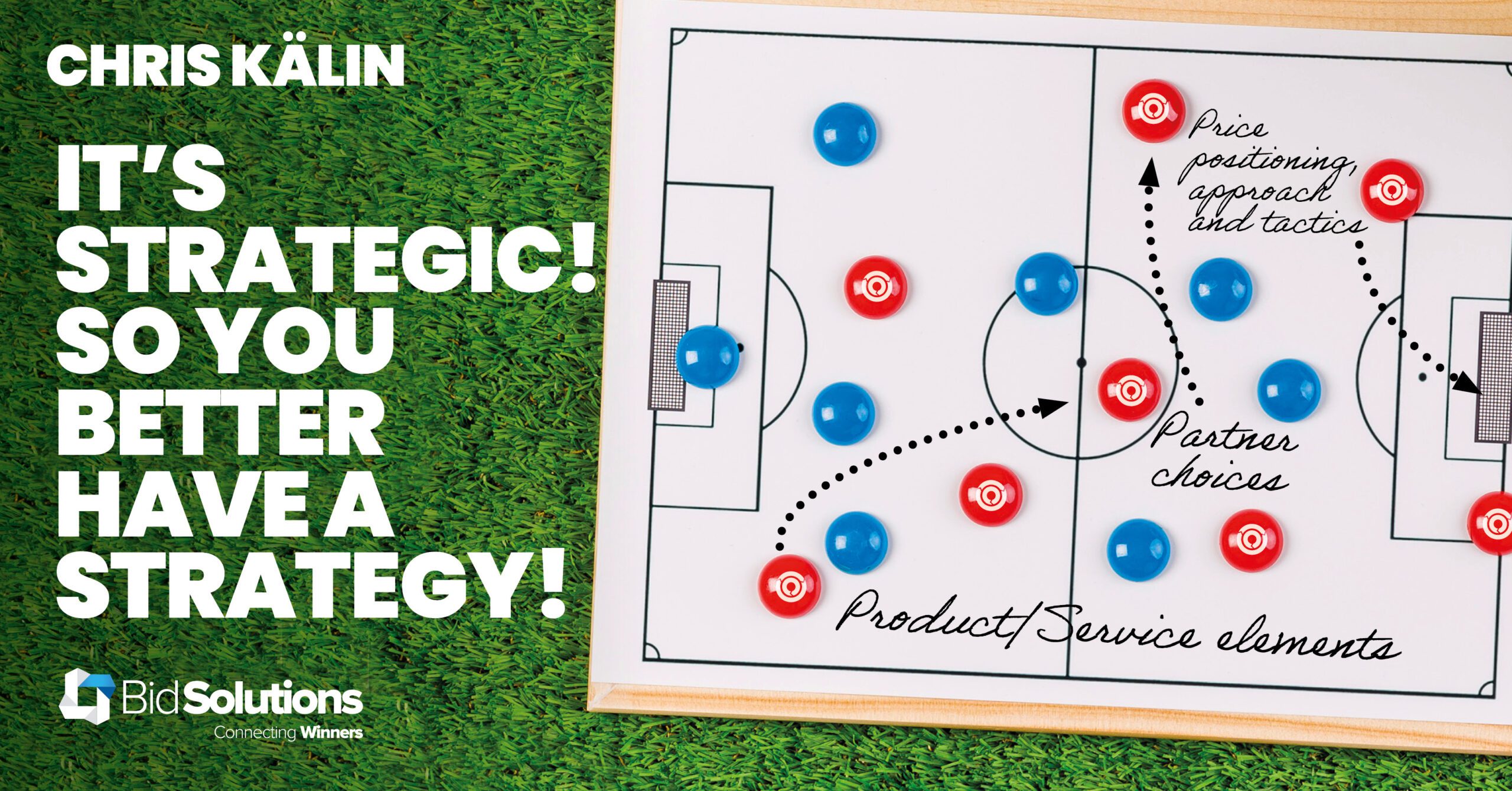
Don’t just answer the RFP questions. Have a plan!
“What’s your win strategy?” I recently asked an Account Manager overseeing a $50M opportunity in the IT sector this question. His answer: “We are going to provide a fully compliant, state-of-the-art, high-quality solution at the lowest possible price point.” Aah! He didn’t have a strategy.
Generally speaking, strategies are high-level plans of action to achieve a long-term or overall goal. While most opportunities fall into the short-term or mid-term category, they still have a clear aim: winning the deal! So it’s about positioning your offer against your competition from the customer’s perspective. We need to distinguish between a) the capture strategy (also ‘opportunity strategy’ or ‘win strategy’) which involves the overall actions to win the opportunity and b) the proposal strategy, which involves the content plan (aka storyline or storyboard) also aimed at winning the deal.
Bidders should verbalise and/or document their strategies using so-called strategy statements – without writing an epic. The proposal strategy should build on the capture strategy. It should outline how you intend to design your proposal document to implement the capture strategy. The content plan is then the tangible output of the proposal strategy.
Of course this type of strategy process is overkill for many smaller opportunities.
Many bidders struggle to formulate any such strategy. What’s so difficult about it? The first challenge for many is gaining sufficient awareness of the competitive landscape. The starting point must be your assessment of your current positioning, typically using a SWOT (Strengths, Weaknesses, Opportunities, Threats) analysis. This depends on your access to competitive intelligence, and therefore is sometimes out of your control.
The second challenge lies in the uncertainty about the type of actions such a strategy should include. We can use the following three dimensions as a simple framework to master this:
- Product/Service elements: What are the key product or service components that we will offer to fulfil the requirements and achieve good positioning (benefits)?
- Partner choices: Are we bidding as a general contractor, sub-supplier, or in a syndicate with other bidders? What will we buy externally to improve our position?
- Price positioning, approach and tactics: How do we position ourselves in terms of price? For instance, low initial investment or low TCO (total cost of ownership)?
Developing your win strategy is about clearly defining the above and developing a communication plan: Which benefit should be communicated to which buying centre member through which channel? Remember: Benefits (not features!) describe the results of your actions on the client’s side.
Finally, your distinct plan on how to place those messages in your proposal is the focus of your proposal strategy which results in a content plan. Done!
This article was written by Chris Kälin.
Chris is a global authority on bid and proposal management. He was co-founder and chairman of the German-speaking APMP chapter and regional director for Europe/Africa. He is APMP-certified at Professional Level (CPP APMP) and is an APMP Approved Trainer. In 2013, he received the prestigious Fellows Award.

